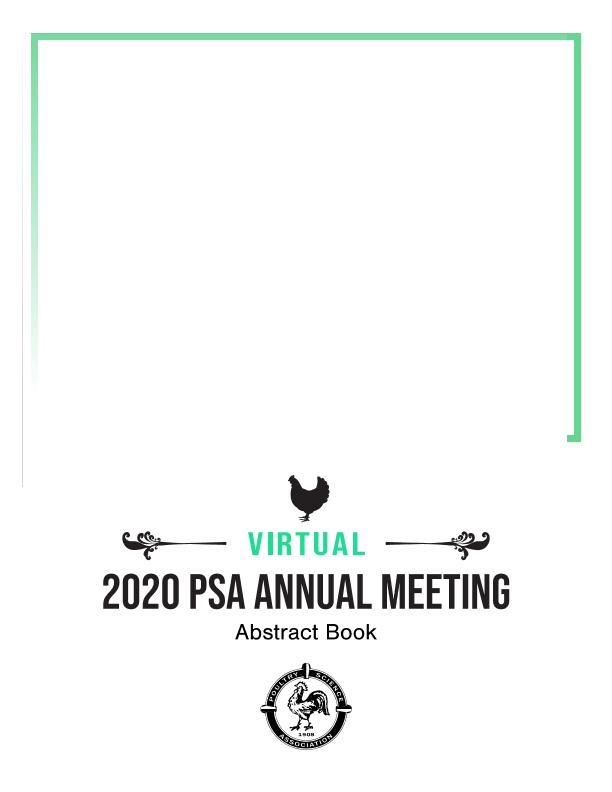Mostrar el registro sencillo del ítem
dc.contributor.author
Simien, Catalina
dc.contributor.author
Barberis, Lucas Miguel

dc.contributor.author
Marin, Raul Hector

dc.contributor.author
Kembro, Jackelyn Melissa

dc.contributor.other
Taylor, Robert L.
dc.date.available
2023-03-30T14:18:53Z
dc.date.issued
2021
dc.identifier.citation
Automatic detection of reproductive behavior in male Japanese quail (Coturnix japonica) using accelerometers and neural networks; Poultry Science Association 109th Annual Meeting; West Virginia; Estados Unidos; 2020; 18-19
dc.identifier.issn
0032-5791
dc.identifier.uri
http://hdl.handle.net/11336/192157
dc.description.abstract
Tri-axial accelerometers placed on an animal measure the 3-dimensional acceleration vector associated with body movements over time. When combined with machine learning and data processing techniques, such as neural networks, this methodology has the potential for classifyingthe recorded acceleration data into behavioral categories. Herein, we propose a system that implements the use of an accelerometer attached to male Japanese quail as a useful way for automatic detection of male reproductive behavior. Two different methods for attaching the accelerometer to the birds were also tested. Fifteen males and thirty females were divided into one of three experimental groups: 1) control without accelerometer attached, 2) using an accelerometer attached to a backpack (i.e. harness fitted by 2 elastic fabric bands around the wings´ base) or 3) using an accelerometer attached to a patch made of fabric glued to the back of the bird. All males were handled similarly and remained individually housed during a one-week period until testing. The test initiated when a male was introduced into the homebox of two female belonging to the sameexperimental group, during a 1-hour period. One camera above and one on the side of the box were used to record behaviors. From video-recording, a high resolution ethogram was performed defining all observable male behaviors at a 1/15s resolution during the first 10-min of testing (9000 data time points per bird). The number and duration of detected behavioral events were estimated. Accelerometer data was collected during the total 60-min of testing. General linearized models were used to assess differences between groups in the most frequently observed behavioral events, namely immobility, vigilance, shakes, exploration, walking, running, grabs, and mounts. In the vast majority of the variables evaluated no differences were observed between groups (P>0.05), including number and durations of mounts. In a second stage, the high-resolution behavioral time series registered from video-recordings were used first to train and then to validate a neural networks, to automatically detect within the accelerometer data the male reproductive events. Noteworthy, all displays of reproductive behavior during the 1-hour testing period were detected with this method. Thus, the proposed system is a first step towards automating the detection of reproductive behaviors relevant for studies where visual observations of video-recording are either not possible or impracticable. In particular, this methodology could be useful to assess male reproductive patterns over time within different social and environmental contexts.
dc.format
application/pdf
dc.language.iso
eng
dc.publisher
Elsevier

dc.rights
info:eu-repo/semantics/openAccess
dc.rights.uri
https://creativecommons.org/licenses/by-nc-nd/2.5/ar/
dc.subject
JAPANESE QUAIL
dc.subject
SOCIAL BEHAVIOR
dc.subject
REPRODUCTION
dc.subject
ACCELEROMETRY
dc.subject
REMOTE DETECTION SYSTEMS
dc.subject.classification
Biología

dc.subject.classification
Ciencias Biológicas

dc.subject.classification
CIENCIAS NATURALES Y EXACTAS

dc.title
Automatic detection of reproductive behavior in male Japanese quail (Coturnix japonica) using accelerometers and neural networks
dc.type
info:eu-repo/semantics/publishedVersion
dc.type
info:eu-repo/semantics/conferenceObject
dc.type
info:ar-repo/semantics/documento de conferencia
dc.date.updated
2022-11-09T16:59:14Z
dc.identifier.eissn
1525-3171
dc.journal.volume
99
dc.journal.number
Supl. 1
dc.journal.pagination
18-19
dc.journal.pais
Estados Unidos

dc.journal.ciudad
West Virginia
dc.description.fil
Fil: Simien, Catalina. Universidad Nacional de Córdoba. Facultad de Ciencias Exactas Físicas y Naturales. Instituto de Ciencias y Tecnología de los Alimentos; Argentina
dc.description.fil
Fil: Barberis, Lucas Miguel. Consejo Nacional de Investigaciones Científicas y Técnicas. Centro Científico Tecnológico Conicet - Córdoba. Instituto de Física Enrique Gaviola. Universidad Nacional de Córdoba. Instituto de Física Enrique Gaviola; Argentina
dc.description.fil
Fil: Marin, Raul Hector. Consejo Nacional de Investigaciones Científicas y Técnicas. Centro Científico Tecnológico Conicet - Córdoba. Instituto de Investigaciones Biológicas y Tecnológicas. Universidad Nacional de Córdoba. Facultad de Ciencias Exactas, Físicas y Naturales. Instituto de Investigaciones Biológicas y Tecnológicas; Argentina
dc.description.fil
Fil: Kembro, Jackelyn Melissa. Consejo Nacional de Investigaciones Científicas y Técnicas. Centro Científico Tecnológico Conicet - Córdoba. Instituto de Investigaciones Biológicas y Tecnológicas. Universidad Nacional de Córdoba. Facultad de Ciencias Exactas, Físicas y Naturales. Instituto de Investigaciones Biológicas y Tecnológicas; Argentina
dc.relation.alternativeid
info:eu-repo/semantics/altIdentifier/url/https://poultryscience.org/files/galleries/2020-PSA-Abstracts.pdf
dc.relation.alternativeid
info:eu-repo/semantics/altIdentifier/url/https://poultryscience.org/Meetings-Past-Meetings
dc.conicet.rol
Autor

dc.conicet.rol
Autor

dc.conicet.rol
Autor

dc.conicet.rol
Autor

dc.coverage
Internacional
dc.type.subtype
Reunión
dc.description.nombreEvento
Poultry Science Association 109th Annual Meeting
dc.date.evento
2020-07-20
dc.description.ciudadEvento
West Virginia
dc.description.paisEvento
Estados Unidos

dc.type.publicacion
Journal
dc.description.institucionOrganizadora
Poultry Science Association
dc.source.revista
Poultry Science

dc.date.eventoHasta
2020-07-22
dc.type
Reunión
Archivos asociados
